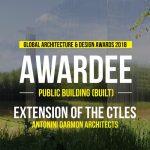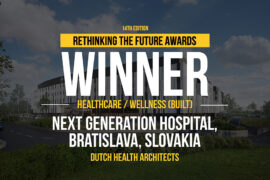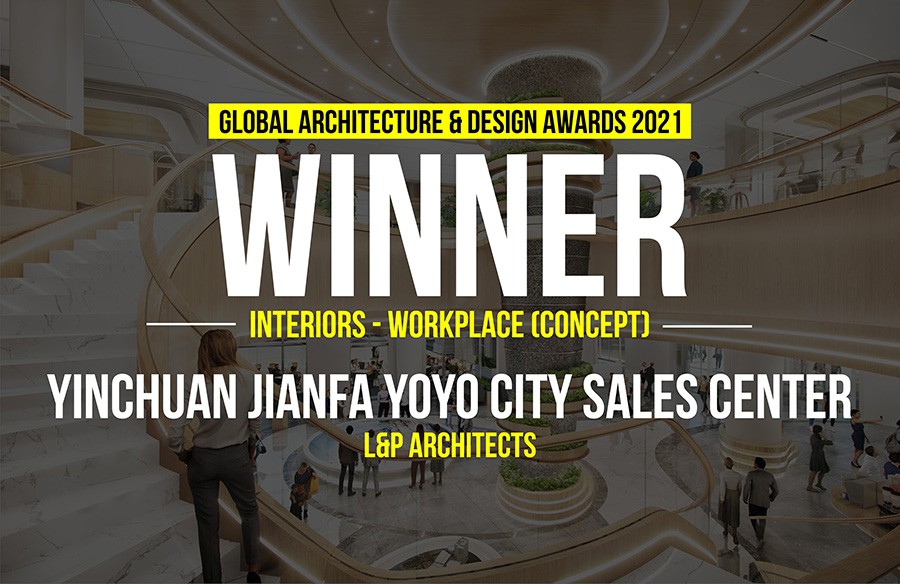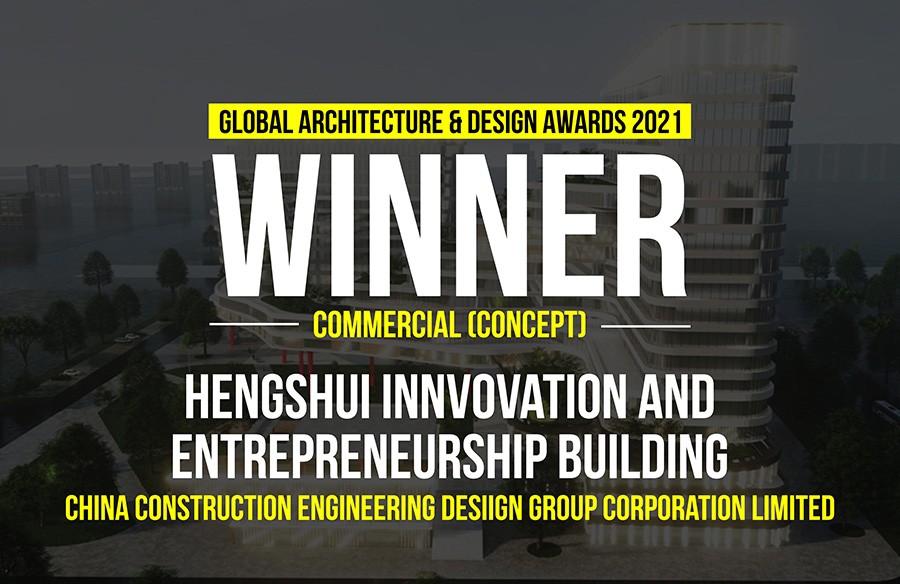Reasonable design – neutral – the shape of the lamp is lightweight, inspiring and reflects usability and the chosen manufacturing process. The uniqueness of craftsmanship highlights minor imperfections in the surface and shape. As a whole, the lamp is neutral. – barrier free – the neutral appearance does not interfere with the aesthetics of any interior and exterior space.
Global Architecture & Design Awards 2018
First Award | Category: Product Design – Interior Design Elements (Concept)
Architects: TRESarchitects
Team Members: Tomas Hubinsky, Jan Legeny
Country: Slovakia
 The production simplicity offers potential for a wide attainability. – idiomatic – the handicraft production attaches the product a character that will be respected not only in production itself but also in everyday use. One would not want to take apart such a product mainly due to the added value of personal approach. suitable material – mechanical – the lamp is made of a 3 mm thick concrete shell casted over a reinforcing fiberglass mesh and electronic components.
The production simplicity offers potential for a wide attainability. – idiomatic – the handicraft production attaches the product a character that will be respected not only in production itself but also in everyday use. One would not want to take apart such a product mainly due to the added value of personal approach. suitable material – mechanical – the lamp is made of a 3 mm thick concrete shell casted over a reinforcing fiberglass mesh and electronic components.
 The shell is sufficiently resistant to day-to-day use. – ecological – concrete and the reinforcing mesh are regionally produced materials. Concrete with a zero or negative carbon footprint is currently available on the market. During the life cycle of the lamp, the materials remain environmentally intact, afterwards they can be recycled. – sensoric – the concrete shell gives a perception of neutrality. Imperfections of the surface reflect a human touch in the handicraft production process. suitable technology – availability
The shell is sufficiently resistant to day-to-day use. – ecological – concrete and the reinforcing mesh are regionally produced materials. Concrete with a zero or negative carbon footprint is currently available on the market. During the life cycle of the lamp, the materials remain environmentally intact, afterwards they can be recycled. – sensoric – the concrete shell gives a perception of neutrality. Imperfections of the surface reflect a human touch in the handicraft production process. suitable technology – availability
 The intention was to revive small-handicraft production, to reconcile the producer with the hightech product as well as the user with the product. accuratetech – the concrete shell is molded to the final shape on a rubber pad, allowing the variability of lowtech resulting shapes and encouraging the development of own creativity. – considerateness – the production technology is equipment and energy undemanding. Given that it is a small- scale production, it urges to a greater resource efficiency. The light source consists of SMD LED chips and copper wires that are embedded in the concrete shell. All electronic components have been reduced to a reasonable amount and can be easily separated during the recycling process after crushing down the concrete shell.
The intention was to revive small-handicraft production, to reconcile the producer with the hightech product as well as the user with the product. accuratetech – the concrete shell is molded to the final shape on a rubber pad, allowing the variability of lowtech resulting shapes and encouraging the development of own creativity. – considerateness – the production technology is equipment and energy undemanding. Given that it is a small- scale production, it urges to a greater resource efficiency. The light source consists of SMD LED chips and copper wires that are embedded in the concrete shell. All electronic components have been reduced to a reasonable amount and can be easily separated during the recycling process after crushing down the concrete shell.
The lamp is powered by the 5.0 V USB infrastructure, which is the most widespread around the world thanks to the boom of mobile phones. Thus, it is not necessary to produce new power sources for the lamp, but just to use the existing chargers, solar chargers, power banks, etc. adequate life cycle – environmentally
The choice of materials follows the intention of avoiding acceptable plastics and using locally available materials that are easy materials to process and are environmentally friendly. However, disputes may arise to what extent concrete or fiberglass meets such specifications. Research on cement production predicts the future of concrete as of a green material with a negative carbon footprint. The same shift is anticipated with glass fibers for concrete reinforcing and their possible replacement with nature based fibres.
Source efficiency – with the choice of the concrete shell technology we achieved the least possible thickness while respecting the mechanical properties of concrete. In this way we were able to minimize the volume of concrete required for the size of the lamp. Thus, the material and energy sources needed for the lamp production is minimal.
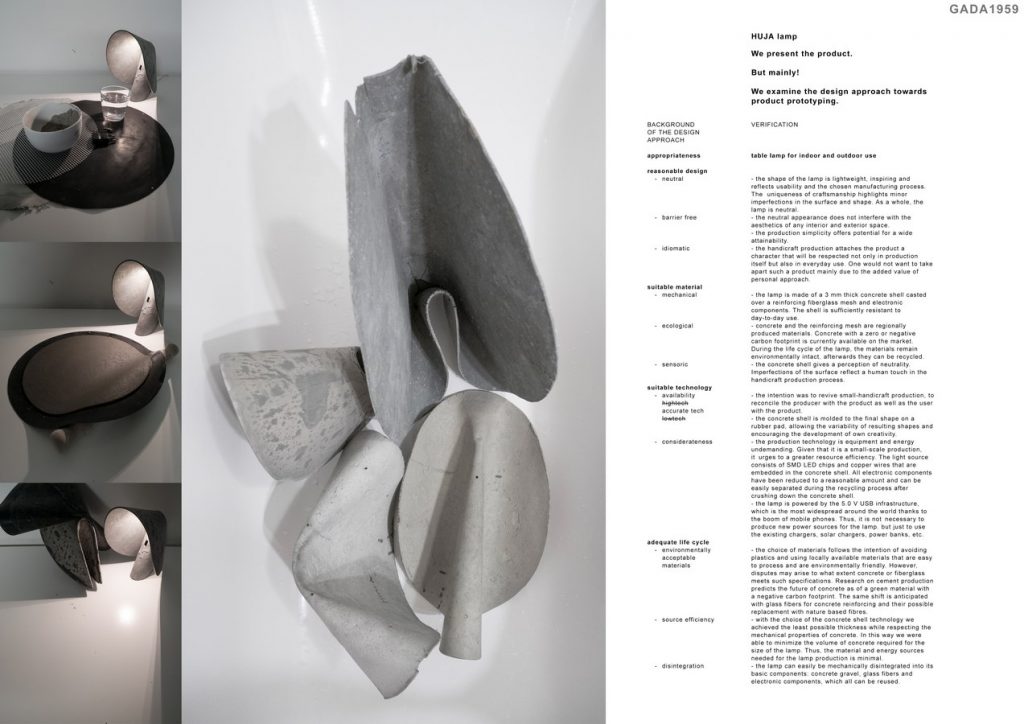 Disintegration – the lamp can easily be mechanically disintegrated into its basic components: concrete gravel, glass fibers and electronic components, which all can be reused.
Disintegration – the lamp can easily be mechanically disintegrated into its basic components: concrete gravel, glass fibers and electronic components, which all can be reused.
If you’ve missed participating in this award, don’t worry. RTF’s next series of Awards for Excellence in Architecture & Design – is open for Registration.
Click Here



